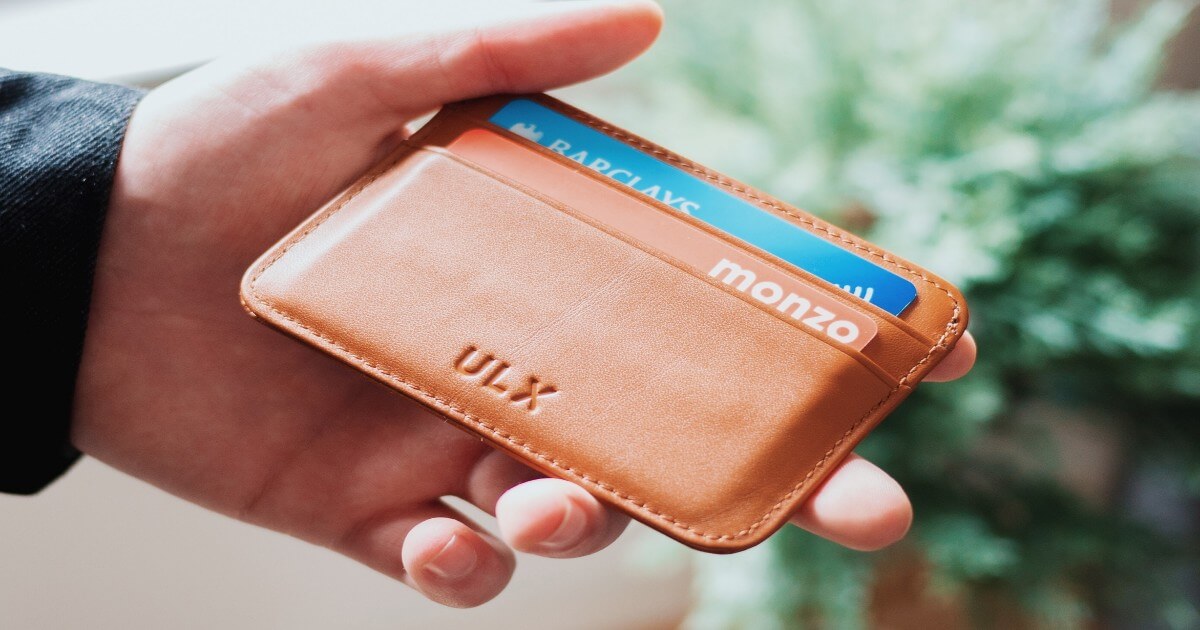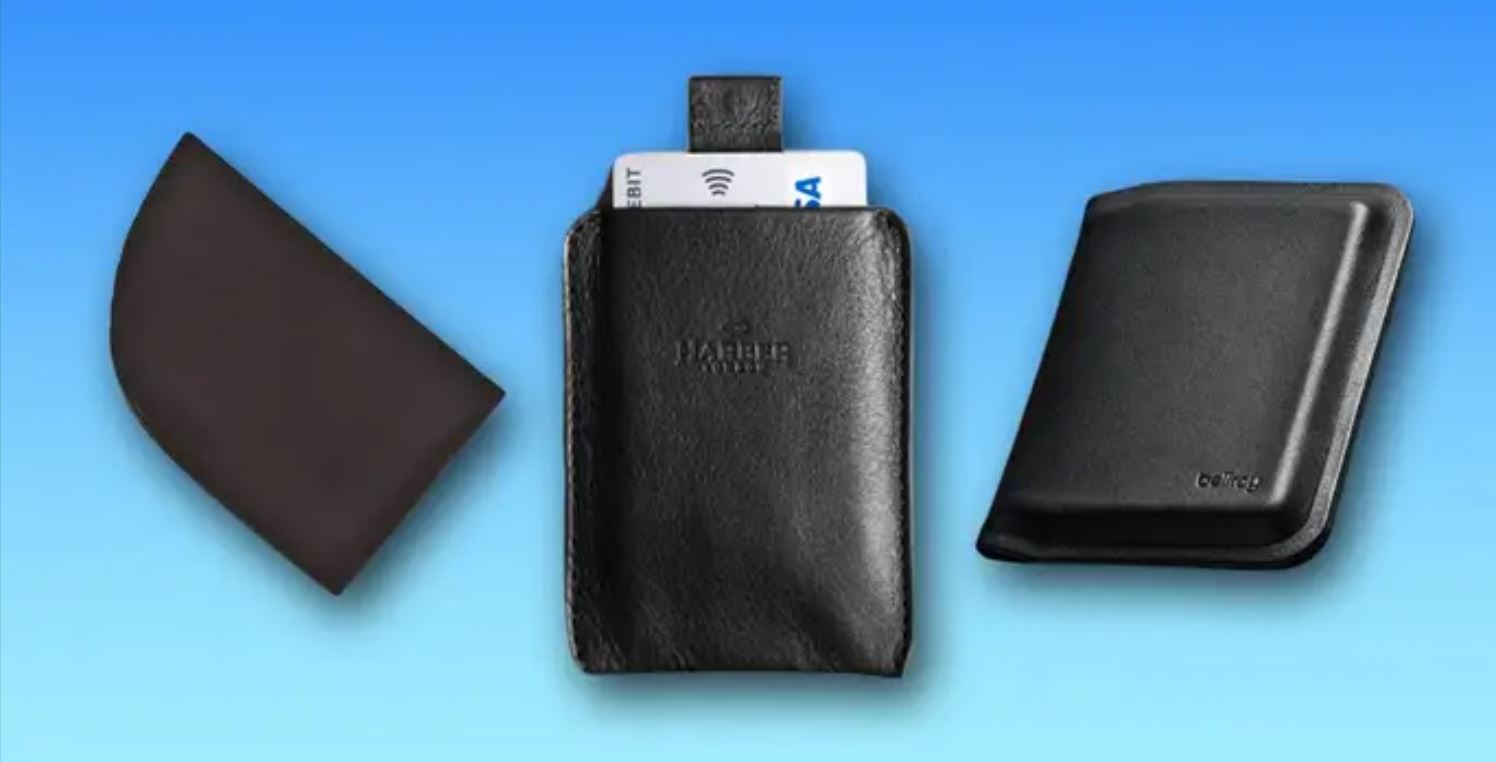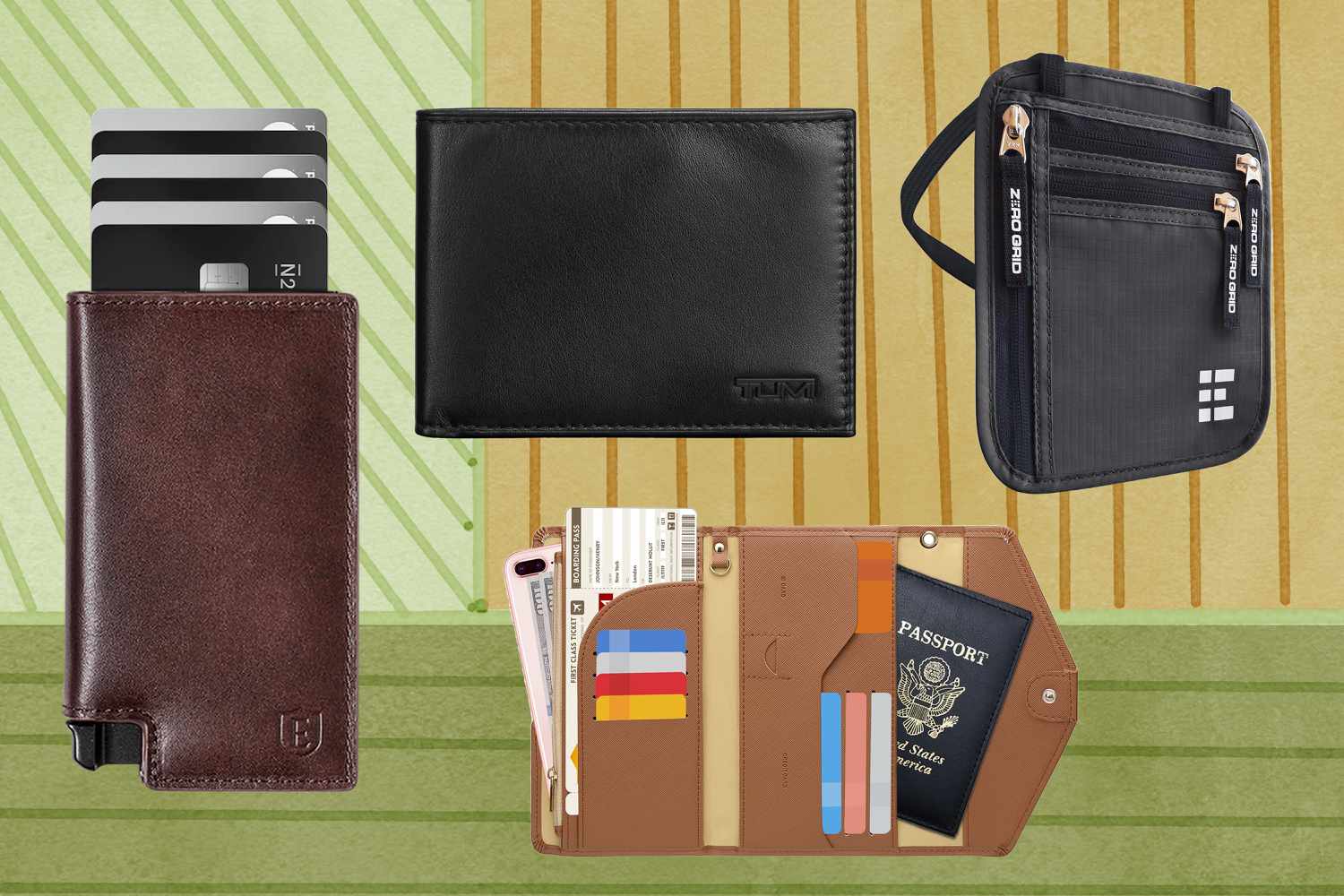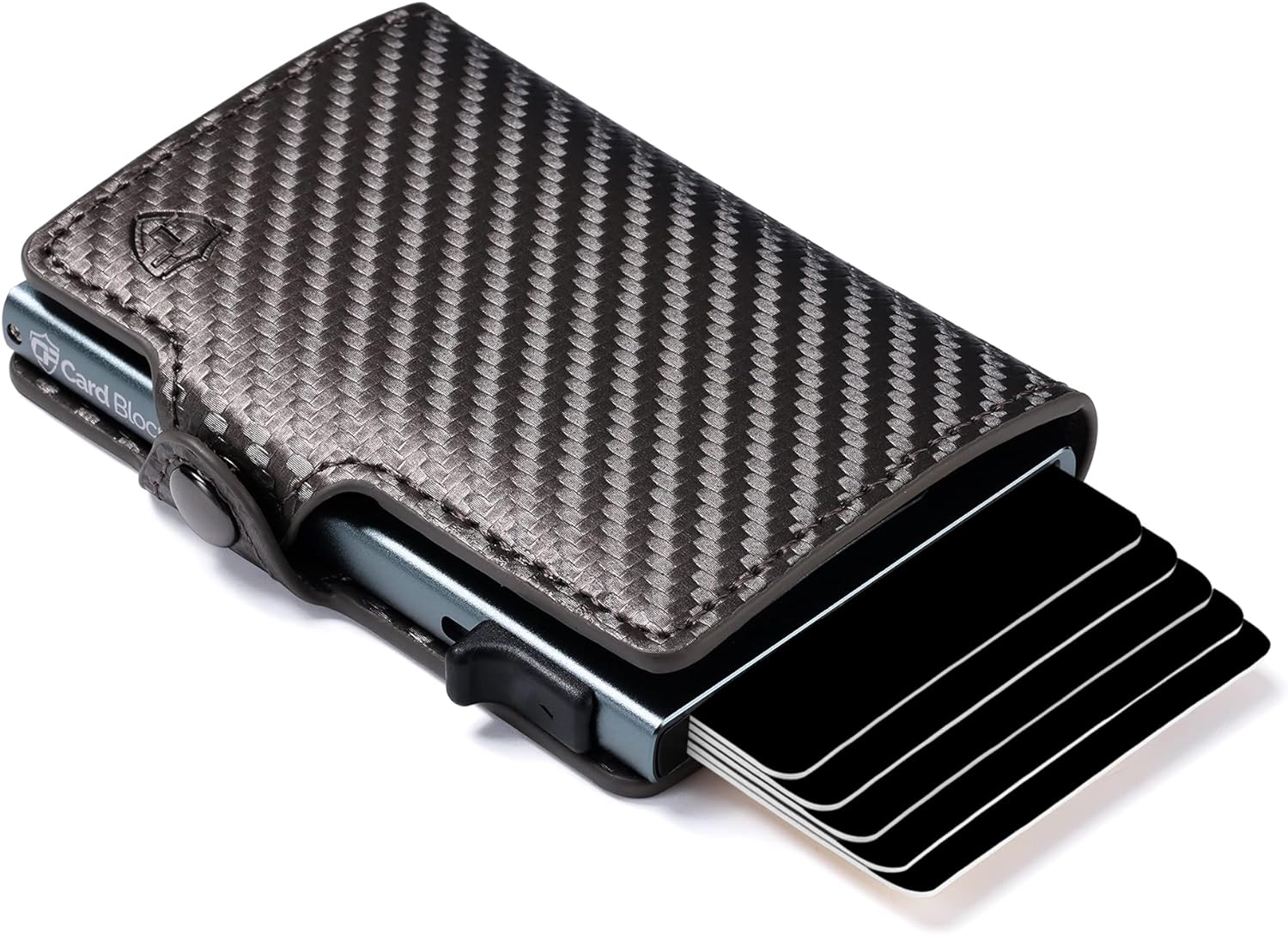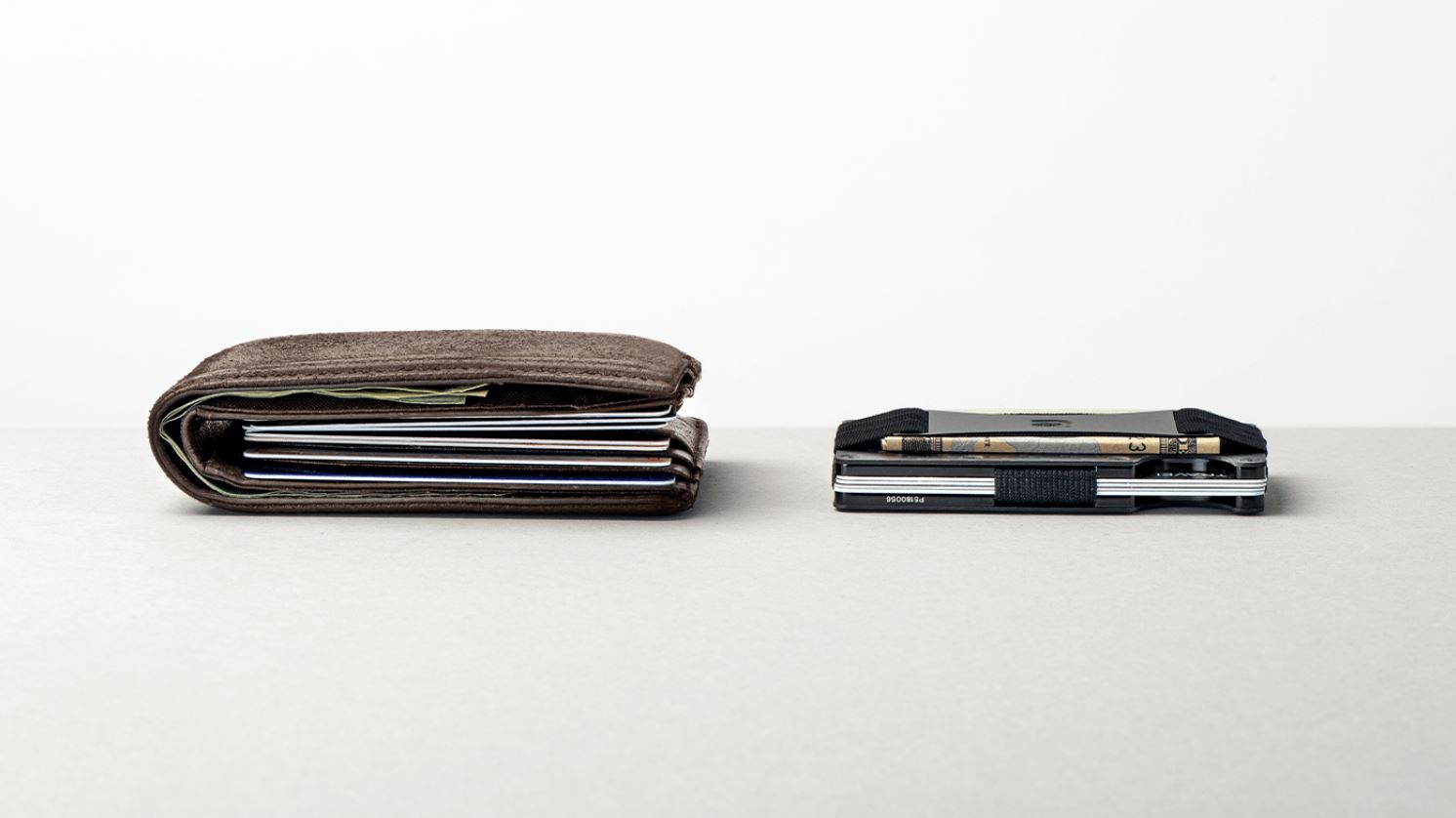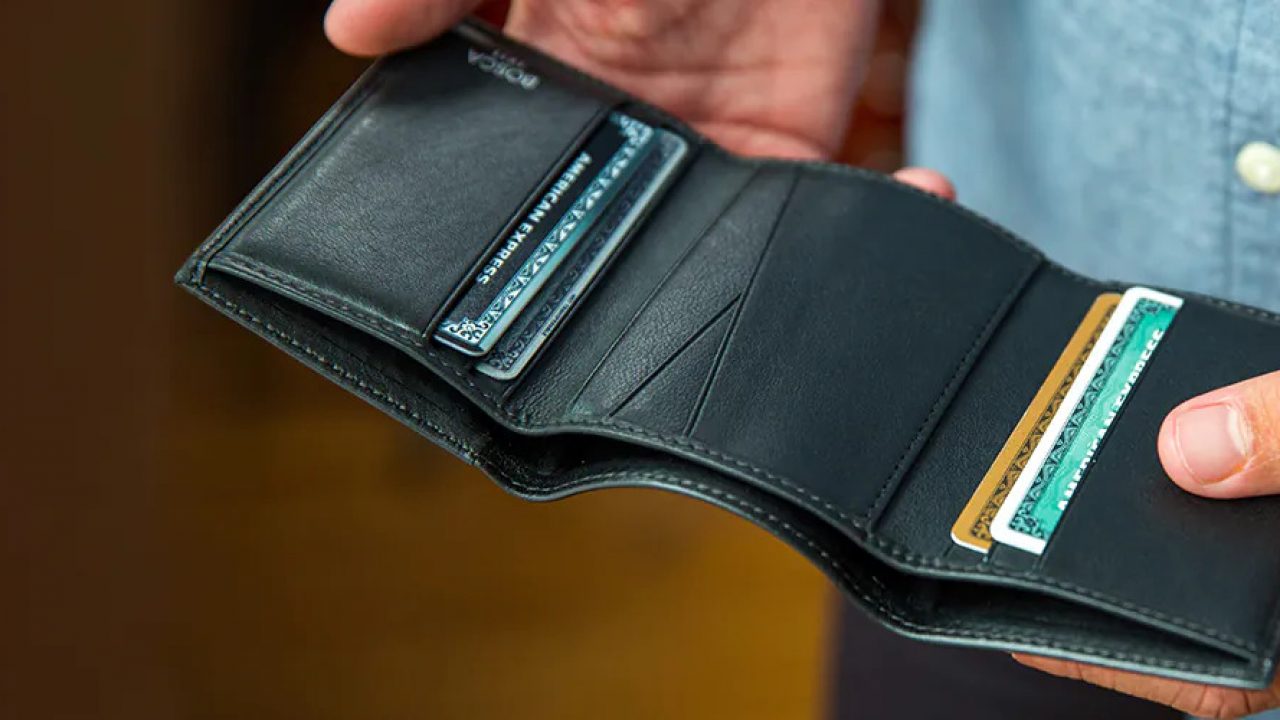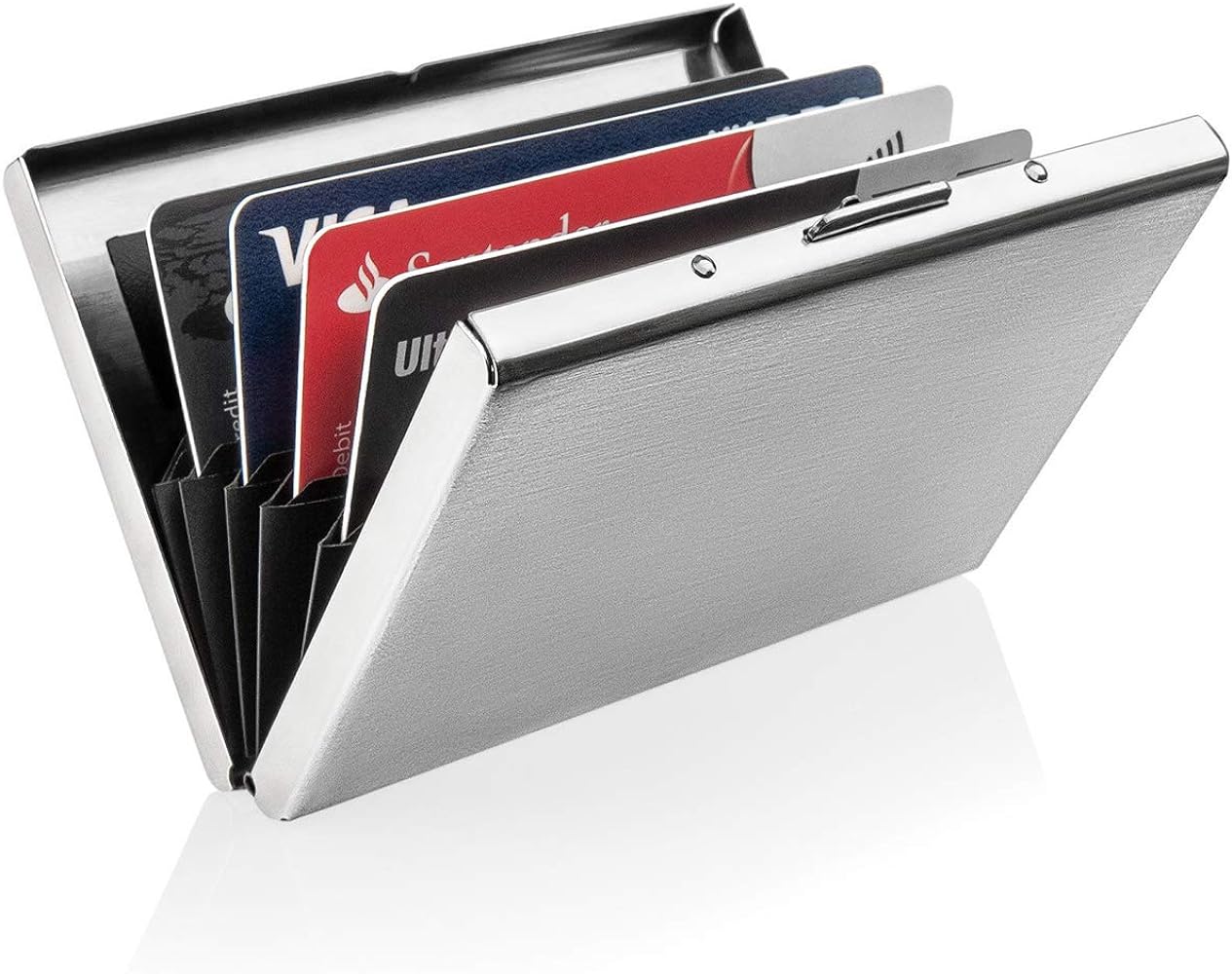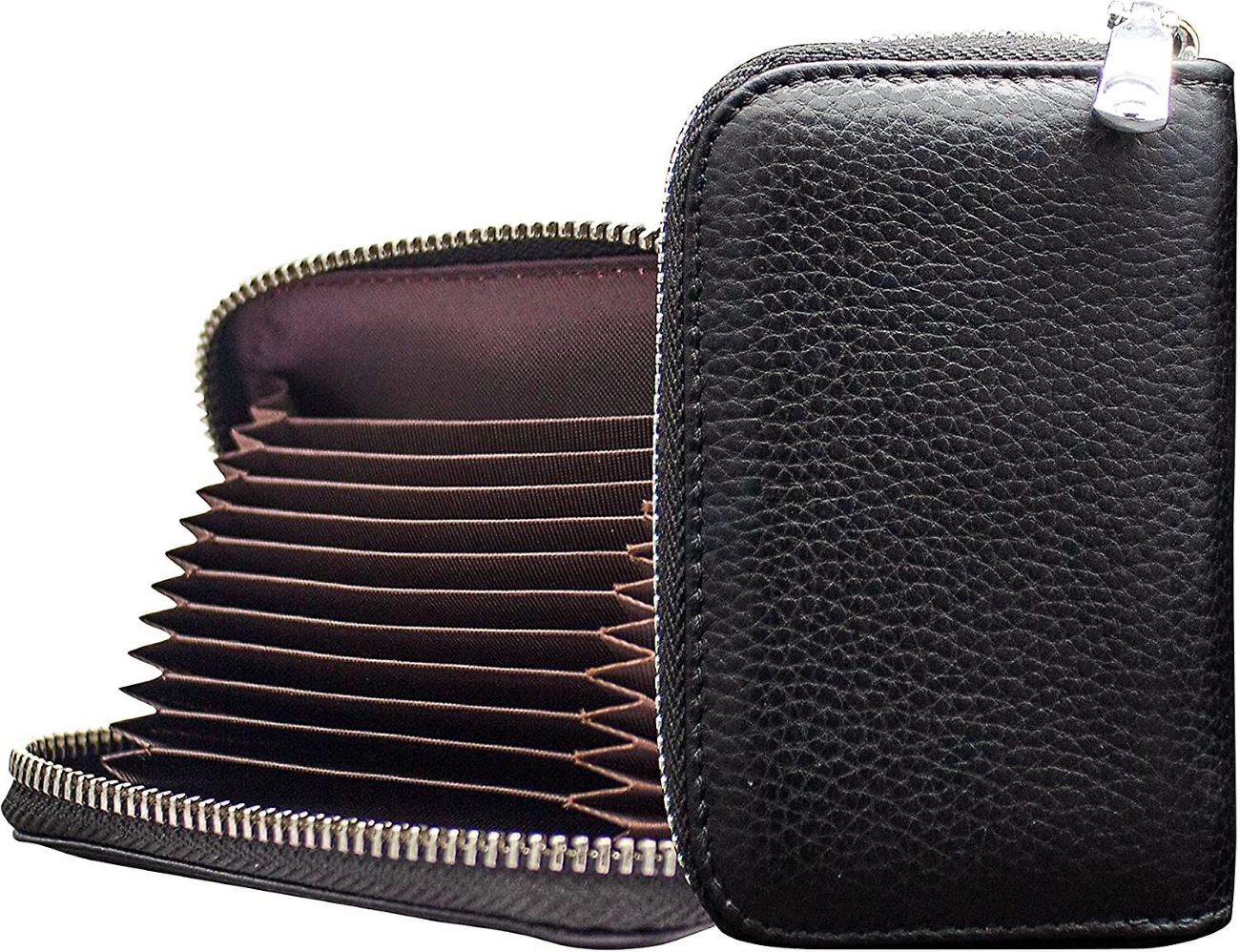What is an RFID Wallet?
An RFID wallet, also known as a radio frequency identification wallet, is a specially designed wallet that provides protection against a growing security threat known as RFID skimming. In today’s world, where technology is becoming increasingly integrated into our daily lives, RFID technology is commonly used in various applications such as contactless payment cards, access cards, and identification cards.
RFID technology uses electromagnetic fields to automatically identify and track tags attached to objects. These tags contain electronically stored information that can be transmitted wirelessly to RFID readers. While RFID technology offers convenience and efficiency, it also poses a risk when it comes to the security of personal information.
RFID skimming, a form of cybercrime, involves the unauthorized scanning and capturing of RFID card data. Skimmers use portable RFID readers that can remotely acquire information from the RFID tags without physical contact, often without the victims knowing they have been targeted. This stolen data can then be used for fraudulent activities such as identity theft and unauthorized transactions.
RFID wallets are designed to protect your RFID-enabled cards from unauthorized scanning and skimming attempts. These wallets incorporate a special technology that creates a Faraday cage or a shielding material to block electromagnetic signals. This prevents the RFID reader from accessing the information stored on your cards, ensuring that your personal and financial data remains safe and secure.
RFID wallets come in different styles and sizes, ranging from sleek and slim wallets to larger travel organizers. They are available in various materials such as leather, nylon, and even RFID-blocking fabric. Some wallets offer additional features like multiple card slots, zippered compartments, and a secure closure mechanism to provide further convenience and protection.
With the increasing prevalence of RFID-enabled cards and the growing concern over identity theft and electronic pickpocketing, investing in an RFID wallet is a smart choice. It offers peace of mind knowing that your sensitive information is safeguarded against potential threats. By using an RFID wallet, you can protect yourself and maintain control over your personal and financial data in an increasingly digital world.
How Does RFID Technology Work?
RFID technology, or radio frequency identification technology, uses electromagnetic fields to automatically identify and track tags attached to objects. It consists of three primary components: RFID tags, RFID readers, and a data management system.
RFID tags are small devices that contain an integrated circuit and an antenna. These tags are attached to objects such as cards, labels, or even embedded within products. They can be either passive or active. Passive tags do not have their own power source and rely on the energy emitted by the RFID reader to activate and transmit data. Active tags, on the other hand, have their own power source and can emit a signal independently.
RFID readers, also known as interrogators, are devices that communicate with the RFID tags. They emit radio waves and capture the information transmitted by the tags. The reader consists of an antenna, a transceiver, and a control unit. When the reader’s radio waves come into contact with an RFID tag within its range, the tag’s antenna captures the energy from the radio waves and activates the integrated circuit. The tag then sends back the stored information to the reader through the same radio waves.
The data management system is responsible for processing and storing the information collected by the RFID readers. It can be a standalone system or integrated into a larger database management system. The data collected from the RFID tags can be used for various purposes, such as inventory management, supply chain tracking, access control, and more.
RFID technology operates on different frequency bands, including low frequency (LF), high frequency (HF), and ultra-high frequency (UHF). Each frequency band has its advantages and limitations in terms of read range, data transfer rate, and cost. LF RFID systems have a short read range and slower data transfer rates but offer better performance in certain environments, such as metal or liquid-rich environments. HF RFID systems offer a moderate read range and faster data transfer rates, making them suitable for applications like access control and ticketing. UHF RFID systems have a longer read range and higher data transfer rates, making them ideal for inventory management and supply chain applications.
Overall, RFID technology provides a convenient and efficient way to identify and track objects in various industries. It has revolutionized processes such as inventory management, supply chain tracking, and access control by automating and streamlining operations. However, it is important to be aware of the potential security risks associated with RFID technology, which is why the use of RFID wallets has become crucial in protecting personal information against unauthorized scanning and skimming attempts.
What is RFID Skimming?
RFID skimming is a type of cybercrime where unauthorized individuals use portable RFID readers to remotely capture and steal the information stored on RFID-enabled cards. These cards include contactless payment cards, access cards, and identification cards that use radio frequency identification (RFID) technology.
RFID skimming works by exploiting the vulnerabilities of RFID technology, which allows information to be transmitted wirelessly between tags and readers. Skimmers take advantage of this to capture the data without physical contact with the card or the cardholder.
Using a portable RFID reader, a skimmer can scan for nearby RFID-enabled cards. When the reader’s radio waves come into contact with the card’s RFID tag, it activates the tag, retrieves the stored information, and captures it. Skimmers can acquire information such as the cardholder’s name, credit card number, expiration date, and other sensitive data.
RFID skimming can occur in various settings, including crowded places like malls, airports, and public transportation, where potential victims are likely to carry their RFID-enabled cards. Skimmers can discreetly scan cards in close proximity without the knowledge of the cardholders.
Once the skimmer has successfully captured the card’s information, it can be used for fraudulent activities, such as making unauthorized purchases, creating fake cards, or even stealing the cardholder’s identity.
It is important to note that not all RFID-enabled cards are vulnerable to skimming. Many newer cards, especially those issued by banks and reputable providers, have implemented advanced security measures to prevent or mitigate RFID skimming attempts. These security features include encryption, authentication protocols, and enhanced chip technology.
However, it is still crucial to remain cautious and take steps to protect yourself against RFID skimming. One effective measure is using an RFID wallet.
RFID wallets are designed with special materials that create a Faraday cage or a shielding material to block electromagnetic signals. This prevents the RFID reader from accessing the information stored on the cards, effectively protecting your personal and financial data from potential skimming attempts.
Be aware of the potential risks and stay informed about the security measures implemented in your RFID-enabled cards. By taking proactive steps and using an RFID wallet, you can minimize the risk of falling victim to RFID skimming and keep your personal information secure.
How Does an RFID Wallet Protect You from RFID Skimming?
An RFID wallet is specifically designed to provide protection against the threat of RFID skimming, a form of cybercrime where unauthorized individuals capture information from RFID-enabled cards. These wallets incorporate a special technology that creates a Faraday cage or a shielding material, effectively blocking electromagnetic signals and preventing RFID readers from accessing the information stored on your cards.
The Faraday cage principle works based on the concept of electromagnetic shielding. The RFID-blocking material used in the wallet contains metal fibers or layers that create a barrier against electromagnetic waves. When you place your RFID-enabled cards inside an RFID wallet, the material acts as a shield that blocks the radio waves emitted by an RFID reader, preventing it from communicating with the cards and capturing their data.
By using an RFID wallet, you create a physical barrier that significantly reduces the risk of RFID skimming. Even if someone attempts to scan your cards using a portable RFID reader, the wallet acts as a protective layer that prevents the reader from accessing the information, keeping your personal and financial data safe.
It’s important to note that not all RFID-blocking wallets are created equal. The effectiveness of an RFID wallet depends on the quality of the RFID-blocking material and its ability to block various frequencies. When choosing an RFID wallet, look for reputable brands that have been tested and verified for their RFID-blocking capabilities.
It is worth mentioning that RFID wallets not only protect your RFID-enabled cards from skimming but also offer additional benefits. They help organize your cards and provide easy access to them when needed. Furthermore, some RFID wallets come with additional security features, such as a secure closure mechanism or hidden slots, which add an extra layer of protection against physical theft or loss.
While an RFID wallet is an effective solution for protecting your cards from RFID skimming, it is important to be aware of other potential security risks. For instance, traditional magnetic stripe cards are still vulnerable to data theft through other means such as card cloning or skimming devices designed for magnetic stripe cards. Therefore, it is recommended to use more secure contactless payment options such as EMV chip-based cards or mobile wallet solutions whenever possible.
Overall, an RFID wallet is an essential accessory in today’s digital age to safeguard your personal information. By investing in a quality RFID wallet, you can have peace of mind knowing that your RFID-enabled cards are protected against the growing threat of RFID skimming and that your sensitive information remains secure.
What Are the Different Types of RFID Wallets?
RFID wallets come in various types and styles, catering to different preferences and needs. Each type of RFID wallet offers its unique features and benefits to protect your RFID-enabled cards from skimming attempts. Here are the most common types of RFID wallets available:
- Bifold Wallets: Bifold RFID wallets are the classic style, featuring a foldable design with multiple card slots, compartments for cash, and sometimes, an ID window. They offer a good balance between storage capacity and compactness.
- Trifold Wallets: Trifold RFID wallets provide additional card slots and compartments. They have two folds, offering more storage space and organization options than bifold wallets. Trifold wallets tend to be slightly bulkier due to their extra compartments.
- Cardholder Wallets: Cardholder RFID wallets are slim and minimalistic, designed to hold a small number of cards. They are compact, lightweight, and convenient for those who prefer carrying only essential cards.
- Money Clip Wallets: Money clip RFID wallets combine card storage with a money clip attached to hold cash. These wallets are ideal for those who prefer a slim and minimalist design and want to carry both cards and cash in one accessory.
- Zipper Wallets: Zipper RFID wallets provide extra security and protection for your cards. These wallets feature a zipper closure mechanism to keep your cards and other valuables secure and prevent them from accidental spills or loss.
In addition to these styles, RFID wallets can vary in their materials, such as leather, nylon, or RFID-blocking fabric. Leather wallets are a popular choice due to their durability, timeless style, and professional appearance. Nylon wallets are often more lightweight and budget-friendly. RFID-blocking fabric wallets provide flexibility and are often designed to be thinner and more flexible than traditional wallets.
Some RFID wallets also offer additional features, including coin pockets, clear ID windows, keyring attachments, or even a slim design to fit in your front pocket comfortably. Consider your specific needs and preferences when selecting the right type of RFID wallet for you.
Remember that the effectiveness of an RFID wallet depends not only on the style but also on the quality of the RFID-blocking material used. When choosing an RFID wallet, make sure to opt for a reputable brand that uses high-quality RFID-blocking technology to ensure maximum protection against RFID skimming.
By understanding the different types of RFID wallets available, you can choose the one that suits your lifestyle, storage needs, and personal style while providing the necessary protection for your RFID-enabled cards.
Are RFID Wallets the Only Solution?
While RFID wallets are an effective solution for protecting your RFID-enabled cards from skimming attempts, they are not the only solution available. Here are some alternative methods and additional measures you can consider to enhance your protection against RFID skimming:
- RFID Blocking Sleeves: RFID blocking sleeves are slim, lightweight, and affordable alternatives to RFID wallets. These sleeves are designed to fit individual cards and provide RFID protection when the cards are inserted. They are especially useful if you prefer using a regular wallet or cardholder but still want to protect specific cards.
- RFID Blocking Cards: RFID blocking cards are credit card-sized devices that can be placed alongside your RFID-enabled cards in your wallet or cardholder. These cards work by creating a protective barrier that blocks RFID signals, similar to RFID wallets and sleeves.
- Signal Blocking Pouches: Signal blocking pouches, also known as Faraday pouches or signal-blocking bags, provide a secure and portable solution for temporarily blocking RFID signals. These pouches are made from RFID-blocking fabric and are designed to hold multiple cards or devices, providing protection against skimming attempts when you are on the go.
- Physical Card Protection: In addition to RFID protection, it is essential to handle your physical cards with care. Always keep your cards in a secure place, avoid leaving them unattended, and be mindful of your surroundings when using them in public. Regularly monitor your card statements for any unauthorized transactions and report any suspicious activity to your card issuer immediately.
- Use Secure Payment Methods: Consider using more secure contactless payment methods, such as EMV chip-based cards or mobile wallet solutions. These methods offer additional layers of encryption and authentication, making it more challenging for scammers to access and misuse your card information.
- Stay Informed: Keep yourself updated on the latest advancements in RFID technology, security measures implemented by card issuers, and any new skimming techniques. Stay informed about best practices for protecting your personal information and take proactive steps to secure your digital and physical assets.
While RFID wallets are a popular and convenient choice, it is important to recognize that there are other effective solutions to protect yourself against RFID skimming. Ultimately, the choice of method depends on your preferences, lifestyle, and level of convenience you require in safeguarding your RFID-enabled cards.
By combining multiple protective measures and practicing vigilance, you can minimize the risk of falling victim to RFID skimming and ensure the safety of your personal and financial information.
How to Choose the Right RFID Wallet for You
With a wide range of RFID wallets available, it can be overwhelming to choose the right one for your needs. Here are some key factors to consider when selecting an RFID wallet:
- Style and Size: Determine the style and size of the wallet that suits your preferences and lifestyle. Decide whether you prefer a bifold, trifold, cardholder, or money clip design. Consider the number of cards you carry, as well as your cash-carrying needs.
- RFID-Blocking Technology: Ensure that the RFID wallet you choose has reliable and effective RFID-blocking technology. Look for wallets that are tested and verified to block various frequencies and provide maximum protection against skimming attempts.
- Material and Durability: Consider the material of the wallet, such as leather, nylon, or RFID-blocking fabric. Choose a material that is durable, long-lasting, and suitable for your everyday use.
- Storage Capacity: Determine the number of card slots, compartments, and additional features you require. Some wallets offer ID windows, coin pockets, or zippered compartments for added convenience and organization.
- Security Features: Consider additional security features that can enhance the protection of your cards. Secure closure mechanisms, hidden slots, or reinforced stitching can provide added security against physical theft or loss.
- Design and Aesthetics: Look for a wallet that matches your personal style and aesthetic preferences. Whether you prefer a classic, minimalist, or trendy design, choose a wallet that reflects your taste.
- Brand Reputation: Opt for wallets from reputable brands known for their quality and reliability. Research customer reviews and ratings to ensure you are investing in a trusted RFID wallet.
- Budget: Set a budget for your RFID wallet purchase. Determine how much you are willing to spend and look for wallets that fit within your budget while still meeting your requirements.
Consider these factors in combination with your individual needs and preferences to find the perfect RFID wallet for you. It is also helpful to read product descriptions, customer reviews, and compare different options before making a decision.
Remember, the primary function of an RFID wallet is to protect your RFID-enabled cards from skimming attempts. Choose a wallet that not only provides this essential security but also fits seamlessly into your lifestyle and offers the desired functionality and style.
By taking the time to choose the right RFID wallet, you can enjoy the convenience, peace of mind, and protection that it offers for your personal and financial information.
Conclusion
RFID technology has revolutionized various industries, offering convenience and efficiency in identifying and tracking objects. However, it also poses a significant security risk in the form of RFID skimming, where unauthorized individuals can capture and misuse the information stored on RFID-enabled cards.
An RFID wallet provides a reliable solution to protect your cards from potential skimming attempts. By using specially designed RFID-blocking technology, these wallets create a barrier that blocks electromagnetic signals, preventing RFID readers from accessing your card information.
When choosing an RFID wallet, consider factors such as style, size, RFID-blocking technology, material, storage capacity, security features, design, brand reputation, and your budget. By selecting the right RFID wallet, you can ensure your personal and financial data remains safe while also enjoying the organization and convenience it provides.
It’s important to note that while RFID wallets are effective, they are not the only solution available. RFID blocking sleeves, RFID blocking cards, signal blocking pouches, and practicing physical card protection are additional measures you can consider to enhance your security against RFID skimming.
Remember to stay informed about the latest advancements in RFID technology and the security measures implemented by card issuers. By staying vigilant and taking proactive steps, you can reduce the risk of falling victim to RFID skimming and protect your personal information.
Investing in an RFID wallet and implementing other security measures is crucial in today’s digital age. By doing so, you can have peace of mind knowing that your personal and financial data is safeguarded against potential threats and that you have taken the necessary steps to protect your information in an increasingly interconnected world.







